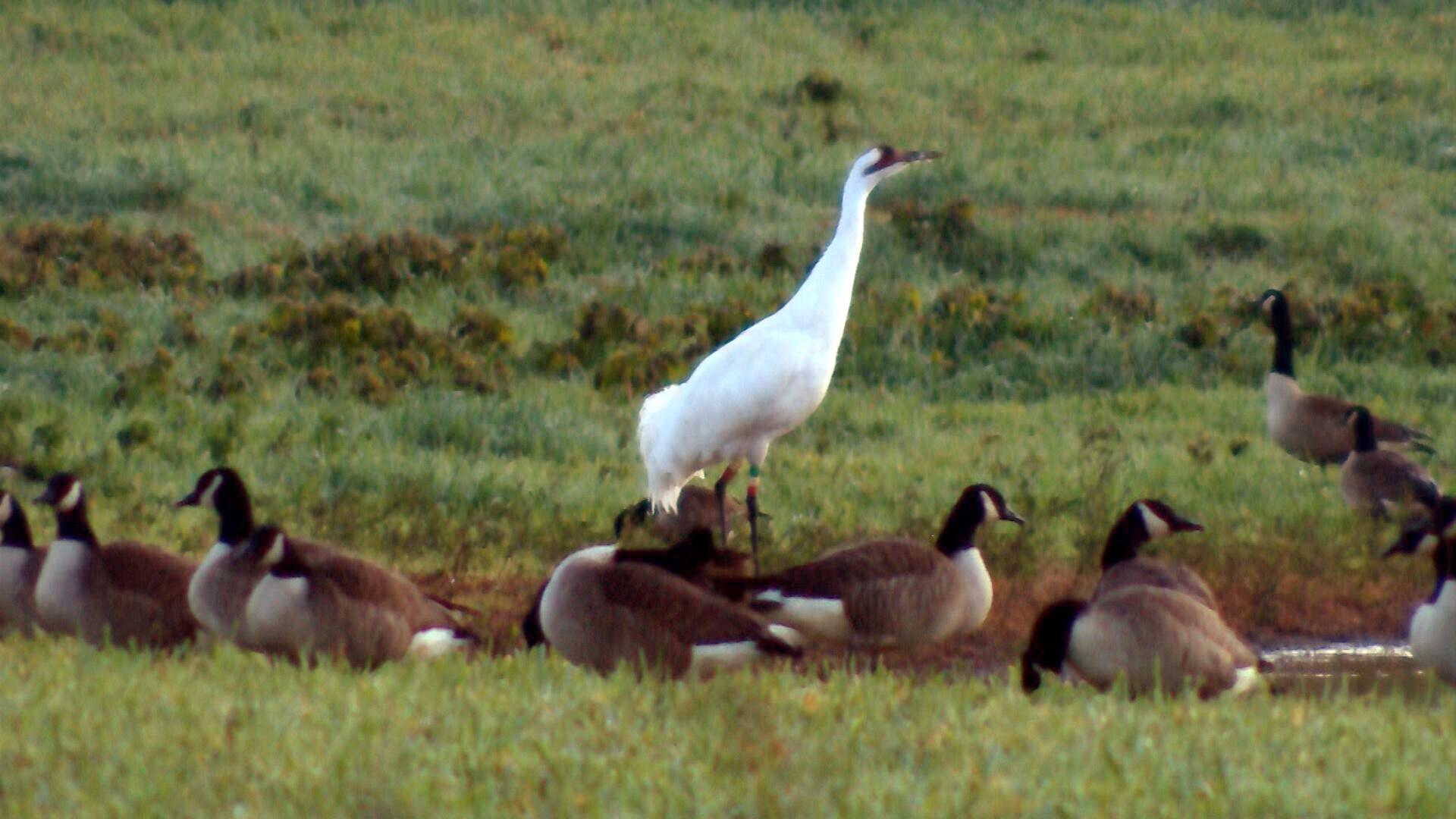

At one point in the 1950s there were only 15 whooping cranes left in the world, but that number has grown, thanks in part to organizations like Operation Migration. Operation Migration helps young whooping cranes learn the migration routes from up North to down South by leading them with an ultralight on their initial migration – destination St. Marks Wildlife Refuge since 2009.
Brooke Pennypacker is the pilot and crane handler for Operation Migration. “I think the whooping crane represents hope, really, to a lot of people. It represents an effort to do something good and something right… maybe correct some wrongs that were done in the past. I think that attracts people’s attention.”
The whooping cranes have a pen out in the marsh, which is a bit of a walk to reach. Occasionally, a natural predator will find its way in.
“There was something in the pond, and last night I was out there standing with the birds and they got scared and left,” says Pennypacker. Using materials he had on hand, he wrapped the intruder in his whooping crane feeding costume and called park manager Terry Peacock to get the small alligator removed. All of the cranes are okay.
Brooke Pennypacker takes WFSU producer Rob Diaz de Villegas out to the whooping crane pen. There are eight cranes in it and to get a good look, Brooke takes Rob to a blind that was built by the Refuge for this project.
“What we’re doing is basically establishing a second migratory flock of whooping cranes. The flock goes from Wisconsin down to Florida every year and back. It’s an insurance policy to protect the species. The natural-occurring flock goes from Wood Buffalo in the Northwest Territories in Canada down to Aransas, Texas every year,” says Pennypacker. “But if there’s an oil spill over their winter habitat to ruin it, or if there’s a disease problem, the species could be wiped out – so this is a second flock we’re establishing to ensure the survival of this species of bird.”
A lot of care has gone into re-establishing North America’s tallest bird. The eight cranes in this group are from eggs laid in nests abandoned at Necedah National Wildlife Refuge by pairs that had flown down here years ago. A black fly infestation chased the adults off the nest, so the eggs were collected. They were sent to Patuxent National Wildlife Research Center in Laurel, Maryland where they were hatched and all the early raising of the chicks was done there as well as their early training. When they were between 50 and 60 days old, they were put in a small plane and taken to Wisconsin where they spent the summer in flight training.
Brooke feeds the cranes and checks on them at least twice a day. He pays close attention to their behavior and can notice when something is wrong.
“The place that they’re at is a good little roosting site. It’s got a lot of water in it. But normally, up until last Friday, they would be doing what they’re doing there out on the oyster bar. Because of the gator, I guess, they’ve been afraid to go out there, so they set up shop over there,” Brooke whispers as he points out the place.
In spite of the rare small gator, after dark they are safest within the pen and it’s Brooke’s job to keep them there. “We have a couple of things we do. We have a vocalizer on a bullhorn here. We have their parents’ brood call on an MP3 player here – and then it goes through the bullhorn. And sometimes that will bring them into the pen when we play this. Sometimes, we have to go out and we have to ‘swamp monster’ them.” Swamp-monstering means putting on a blue tarp to scare them and often they’ll go into the pen for security.
The cranes are only guided down once. They fly back on their own and are tracked. Some return to winter in the Refuge. One, from the second St. Marks class, has been wintering nearby for years.
Whooping cranes still rely on help from humans. “Well, I would like to participate in the preservation of the species. It’s kind of a thrill for me to be able to help out with that effort,” says Brooke Pennypacker.
For more information on Operation Migration and to follow the progress of each years’ trip, visit OperationMigration.org.
You can also visit WFSU’s Ecology blog, which includes a link to our video of the first St. Marks whooping crane flyover in 2009.
Rob Diaz de Villegas is a senior producer for television at WFSU Public Media, covering outdoors and ecology. After years of producing the music program OutLoud, Rob found himself in a salt marsh with a camera, and found a new professional calling as well. That project, the National Science Foundation funded "In the Grass, On the Reef," spawned the award-winning WFSU Ecology Blog. Now in its tenth year, the Ecology Blog recently wrapped its most ambitious endeavor, the EcoCitizen Project.
Rob is married with two young sons, who make a pretty fantastic adventure squad.





